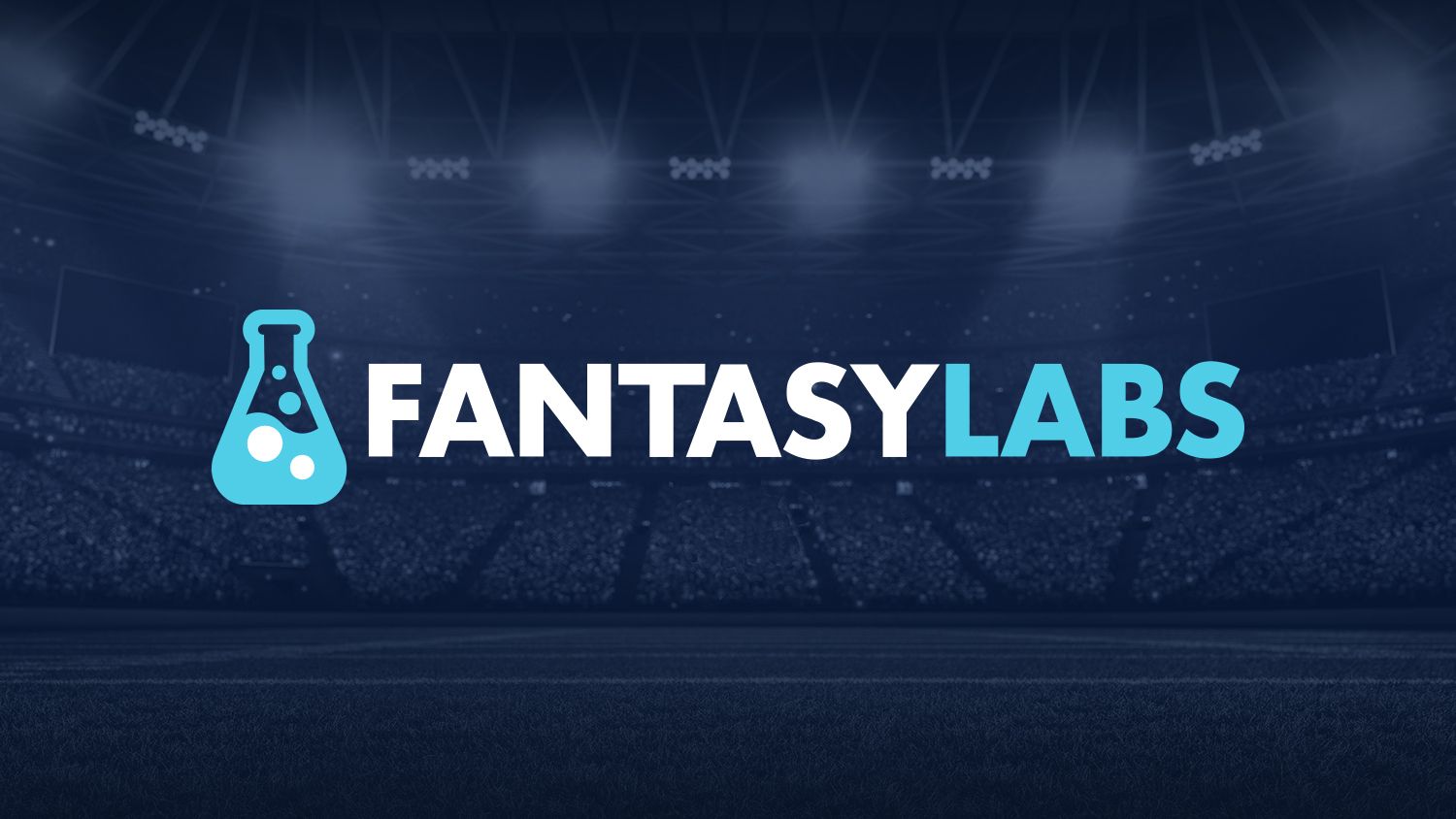My early impression of our new SimLabs product is that it’s especially valuable on smaller slates. When the player pool shrinks, building unique lineups becomes far more valuable than trying to “pick the best plays.” A tool like SimLabs is an invaluable way to do that.
Sure, we can look at ownership projections without a simulator. However, that’s only part of the story. Traditional ownership projections don’t factor in correlation. Not just in terms of player performance — which is relatively easy to sort out — but more importantly in terms of ownership within individual lineups.
SimLabs solves that by simulating out thousands of potential opponent lineups to see where edges may lie. After experimenting with the tool for the Super Bowl Showdown slate on DraftKings, here are some of the lessons I’ve learned.
Christian McCaffrey Is The Best Play
OK, we probably didn’t need any fancy tools for that — but stick with me. There’s a tendency among players to try to get “too cute” with Showdown lineups. McCaffrey (or anyone else) isn’t a good play if everyone plays him — so then far fewer people play him. It’s sort of like how nobody drives in New York because there’s too much traffic.
It’s nice to be able to quantify when fading the popular plays is actually +EV compared to when it’s not. SimLabs reveals that sticking with CMC — either at Captain or in the Flex — is the way to go. He’s the top player in the “optimal vs. ownership” metric, with a narrow lead as a Captain but a wide lead in the Flex.
Digging a bit deeper, it looks like the best way to play McCaffrey at Captain is in lineups that are heavy on the Chiefs. That’s somewhat counterintuitive to how we typically play running backs. The general thinking is that running backs do better with a lead — which implies more scoring from their team than the opponent.
However, due to McCaffrey’s salary, the best way for him to pay off at Captain is by dominating so much of the 49ers’ production that the rest of the team gets left behind. With a 20-lineup simulation, the most popular players to pair with McCaffrey are (in order) Rashee Rice, Patrick Mahomes, and Travis Kelce.
This also implies that the best way to approach things is by building around the Chiefs’ passing game along with McCaffrey. The 49ers defense is also a popular choice in McCaffrey-led lineups — though the bulk of those are 49ers onslaughts with other cheap San Francisco options.
Don’t forget to check out our SimLabs Lineup Generator to create advanced DFS lineups using the power of simulation:
Get a Little Crazy — But Not at Captain
Behind McCaffrey, the highest EV options at captain are wideouts Deebo Samuel and Rashee Rice. No real surprises there — though note that both quarterbacks are projected to be owned at a higher rate than they appear in the optimal lineup.
However, when we look at the Flex spot, it gets way more interesting. The top spots beyond McCaffrey are occupied by Jauan Jennings, Charlie Woerner, Kyle Juszczyk, and Blake Bell.
There are two parts to this. First is the obvious — that tier of players tends to go overlooked by the field. That’s true on all Showdown slates, but potentially more so in the Super Bowl. With two weeks to prepare and no reason to keep anything in your pocket, the championship game is the ideal time for trick plays to lesser-utilized players.
The bigger factor might be their salaries. Jennings costs $4,000 in the Flex, and he’s the only member of that group to crack triple-digits. For lineups that contain McCaffrey at Captain and the Chiefs’ top passing game options, we have to save salary somewhere.
I wouldn’t worry too much about the specific players involved. The simulations rely on our projections, but all of these players are bets on something “unprojectable” happening. While that’s obviously not especially likely, SimLabs shows the odds are higher than the field is anticipating.
Be sure to check out all the pick’ems Sleeper has to offer with Sleeper Fantasy promo code LABS1 for a $100 deposit match.
Keep It Simple For Single Entry
I generated 50 single-entry lineups to see if there was an appreciable difference in the players SimLabs likes for this contest type compared to multi-entry GPPs. While there are not really enough contest options to run 50 — or even 20 — single-entry lineups, multi-entering a variety of single-entry contests is a solid strategy.
When switching over to the single entry setting on SimLabs, it was immediately apparent that playing the obvious plays is a sound strategy. Both quarterbacks appeared at a higher rate of the top lineups than they did in multi-entry play, for example. The captain exposure was 90% between McCaffrey, Mahomes, Kelce, and Rice.
The prevailing strategy was to build lineups with five highly projected players while taking a shot with one thinner play. Assuming the stars roughly live up to expectations, you’d only need to get one thing right (the cheaper play) in order to take down the contests.
On the whole, these lineups also utilized a greater percentage of the salary cap than the lineups built for MME contests. The takeaway here is we don’t need to worry as much about getting unique — since leaving some salary on the table is a solid strategy to ensure unique lineups.






